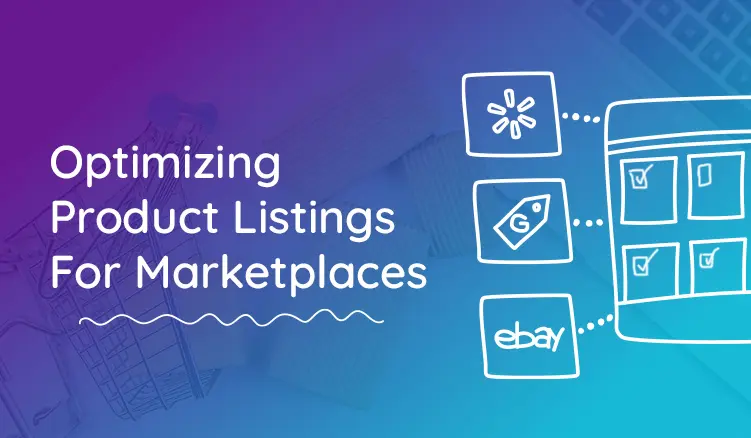
Keep the good stuff coming
Subscribe to our blog newsletter and get monthly content that helps you manage product data smarter.
No spam. Just real value.
Amazon continues to impress while battling Google for ecommerce dominance.
In 2019, Amazon’s total annual revenue stood at $280.5 billion, which jumped a whopping 38% to $386 billion in 2020. Considering this growth, it’s not hard to see why more product searches take place directly within Amazon than on Google or why it’s the perfect place for sellers to invest.
Amazon currently has 12 marketplaces: USA, UK, Germany, France, Canada, Japan, India, Italy, Spain, Mexico, Brazil, China, Australia, and Singapore, with others in the pipeline.
Last year (2020) alone, 1 029 528 new sellers joined these marketplaces. Clearly, there is a ton of competition, but also a ton of visitors. In the US alone, there are 150.6 million mobile users for Amazon. That’s without any searches that lead to Amazon from other channels.
There is no denying that the foundation for ecommerce success is there. The problem comes in with differentiating your brand from similar merchants. With so many sellers vying for the first page of Amazon, the struggle is real. You require a product listing optimization (PLO) strategy that covers visibility, relevance, and conversions. The success of a product is not only based on the conversion rate. A high-ranking product leads to increased sales and brand awareness.
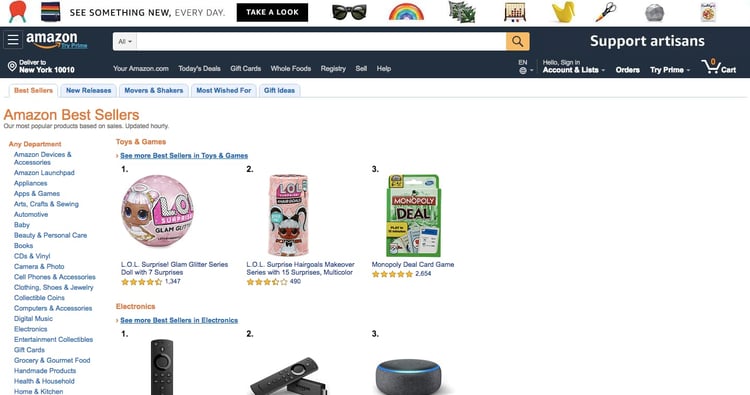
Why you should care about a good product listing
There are basic requirements to adhere to when listing a product on Amazon; however, what you make of it will determine the potential of your listing. The basics, which will be discussed in further detail, include the product title, images, key product features, and detailed descriptions. Amongst these details, Amazon’s A9 Algorithm will prioritize listings with add-on features: sales volume, availability, price, reviews, ratings, and fulfillment by Amazon (FBA).
What is Amazon’s A10 algorithm all about?
When it comes to product search, Amazon’s A10 algorithm has a soft spot for high-traffic, high-converting sellers. Much like Google, Amazon also ranks listings according to keyword relevance, but it also prioritizes sales a§and pricing. For example, Amazon will increase a seller’s visibility and display a listing before a competitor’s if their keywords are relatable and have a history of sales. Why? Well, if a seller has a track record in converting sales on Amazon, it means they’re a.) contributing to Amazon’s bottom line and b.) providing traffic for the website.
By optimizing your listing for both search and discovery, the higher your chances are of being noticed. The more information this algorithm is fed, the smarter it will become in analyzing data, answering customers’ queries, or suggesting products based on their behavior.
Checklist for a basic product listing
Product title
Think about how the opening line in a blog post is the hook; the title is the hook in a product listing. The title speaks volumes and is likely to encourage click-throughs, sales, or nothing at all. It’s the first interaction a customer has with a product. And on top of that, it's also an important ranking signal for Amazon SEO. That is why many sellers write long product titles as part of their product listing optimization strategy, and you should consider doing the same. Focus on incorporating the brand name, available quantity, key features, and the purpose of the product.
Dos:
- Focus the title on primary keywords that are search-specific.
- Break-up elements using pipes and hyphens to maintain readability.
- Stick to 80 characters to ensure that your title is optimized for mobile.
- Consider incorporating long-tail keywords for better context.
- Bring in unique product elements that will set your offering apart. For example, color, price, quality, and brand. Use adjectives to describe these features with trigger words.
- Stick to below 200-words to help crawlers and customers understand your listing.
Don'ts:
- Avoid any keyword stuffing at all costs, and keep each insert as natural as possible.
- Do not make use of special characters or HTML tags in your title.
- Don’t overwhelm customers; stick to a clear and concise product title.
Product images
It’s no secret that people base their decisions on quality product images. More and more often, customers purchase products online that get delivered looking worlds apart from what they had ordered. This creates mistrust and will leave your customers second-guessing your brand.
Dos:
- Your image needs to be directly related to your offering and be visually appealing.
- Stay within the recommended image size of at least 1000 pixels in either width or height. The longest side should be 1600 pixels. Anything over will likely be resized by Amazon, but anything less will influence product quality and display for customers.
- Hero image must be presented on a white background, without graphics on the image.
- Graphics and accessories are allowed to feature in additional product images.
- Optimize your images with alt text for further ranking potential.
- Save your images with a relatable SEO-friendly title. In 125 characters or less, you must explain the image in words for search engines to identify. Remember, crawlers do not “see” images the way we do, so include keywords in this description to add to your ranking potential.
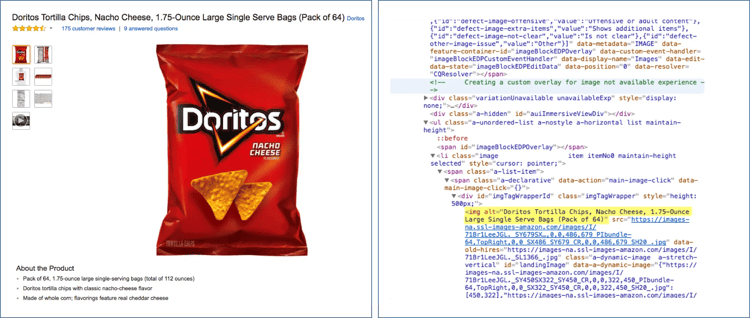
Don'ts:
- Showcase images that are unrelated to your product.
Product features
Also known as bullet points, these are heavily sales-driven points. Sellers get five bullet points, whereas vendors get 10. Sellers must use this space for advertising the product and its most important features or benefits. Break down the content into clear, bite-sized pieces for customers to easily understand.
Do's:
- Use five bullet points for an Amazon Seller or 10 for Amazon Vendor to highlight your features.
- Begin each sentence with a capital letter, and stick to the deal-breaker features or benefits.
- Incorporate target keywords for Amazon if and when it makes sense to do so.
- Write out all numbers as numerals, and spell out any measurements.
- Proofread grammar to ensure a professional brand image on Amazon.

Don'ts
- Avoid mentioning secondary features unless they provide strong value.
- Keep it short and simple, and try and win your customers over in the least amount of words.
- Do not make mention of sensitive information, promotions, or shipping in bullet points.
Product description
In your description, you can explore the nitty-gritty. It’s structured as the final touchpoint for customers, helping them to make a final decision. Be sure to speak your brand’s language and showcase your individuality. Stick to a clear breakdown without using jargon or sensitive language.
Do's
- Stay within the 2000 character limit that Amazon recommends.
- Feature everything from size to style, benefits, and availability in your description
- Do not stretch fluffy content; stick to critical information that adds value.
- Incorporate search terms that are relatable to your product offering.
- Use this as an opportunity to really tell a story and engage your ideal buyer.
- Proofread your content for grammar and punctuation details.
Don'ts
- Avoid mentioning sensitive information or promotional content in your description.
- Don’t be opinionated in your product description; keep it subjective.
- Don’t use special characters or HTML sources in your product description. (*Note, this includes an email address and website URL)
Other product listing ideas to boost conversions
Reviews
As humans, we base our decisions on trust.
And one way to build trust is to incorporate reviews into your Amazon product listing. When you allow customers to read other customers’ experiences with your product or brand, it adds credibility to your ecommerce profile. It is also another way to incorporate keywords into the responses. Of course, you will never be able to control the feedback customers share on your page, but you should still encourage them for conversion-boosting.

Frequently answered questions
Since there is not a dedicated FAQs section for your listing, create one! Allow customers to ask you questions about your brand and products and provide answers regardless. This addition helps you to provide answers for your customers while incorporating branded or industry-specific keywords. Over time, you can start using frequent questions as a part of your bullet point features.
Brand name or identifier numbers
If you’re a well-known brand in the industry or just a successful Amazon seller that reaps high conversions, mention it. Due to Amazon’s taxonomy structure, you can filter brands, manufacturers, or specific product content identifiers, including them for searching customers. If your brand has achieved a specific badge, use this as an opportunity to showcase it.
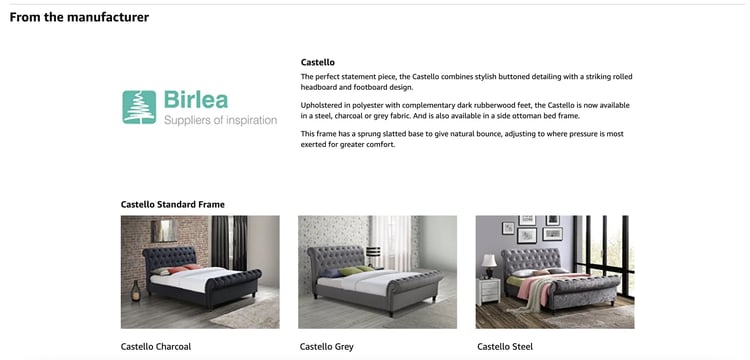
Fulfillment by Amazon
Fulfillment by Amazon is a center that picks, packs, and ships products to buyers. Now, while this is an influential factor for Amazon when prioritizing listings, it is good to know that it does not affect your product listing optimization results. It does contribute to other areas, such as the speed at which a product is delivered. (If you have a bundle strategy in mind, FBA is even more effective as it covers two or more products.) Sellers can rest assured knowing that Amazon has full control over its own shopping platform, and a product will be processed fast.
Solid pricing structure
Be strategic with your pricing. Many customers, in fact, more than 89% of consumers are more likely to buy products from Amazon than from other channels. And a big reason is due to low pricing. Having said that, think carefully about your pricing structure as you will want to be one step ahead of your competitors. Stick to intelligent pricing that is competitive and affordable for your market,
Share the listing online
There is no denying the power of organic search and social media. When done right, you can increase traffic to your listing. If people like, share, and comment on your post via social media, all the better for your brand’s online reputation. It is also advised that you link between listings, where relevant, to provide consistent link juice within the marketplace channel. These small tactics have a positive influence on your SEO, boosting your rankings and selling profile on Amazon.
In conclusion
Online shopping is our new reality. Whether it’s during or post COVID-19, one thing’s for sure, this convenient approach to retail is here to stay! As more customers shop online, and more sellers break into new channels, it will become challenging for brands to keep up and stay competitive.
Currently, only 30% of product listings are optimized correctly in Amazon right now, so you can just imagine the potential your business could have in this thriving marketplace. It’s a no-brainer. You’d better start and implement these product listing optimization tips before it’s too late.
Download our latest white paper for FREE and learn about the latest shopper trends now!
Take product content syndication and retail channel management to the next level with Plytix Product Information Management, and watch your sales soar!
Get started and speak to one of our PIM software experts on how to get your content online and across multiple channels today.

What if your product data actually worked for you?
We’ll show you how Plytix helps you stop fixing data—and start using it.
Related posts
Keep the good stuff coming
Subscribe to our blog newsletter and get monthly content that helps you manage product data smarter.
No spam. Just real value.
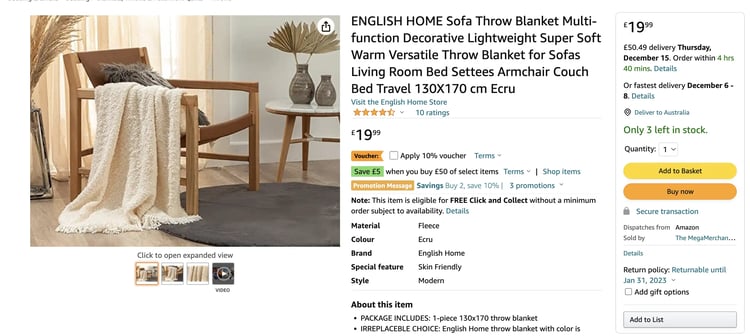





Think others should see this?
Go ahead and share it.